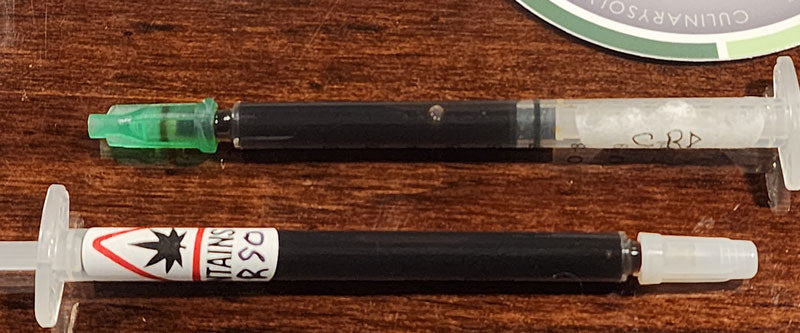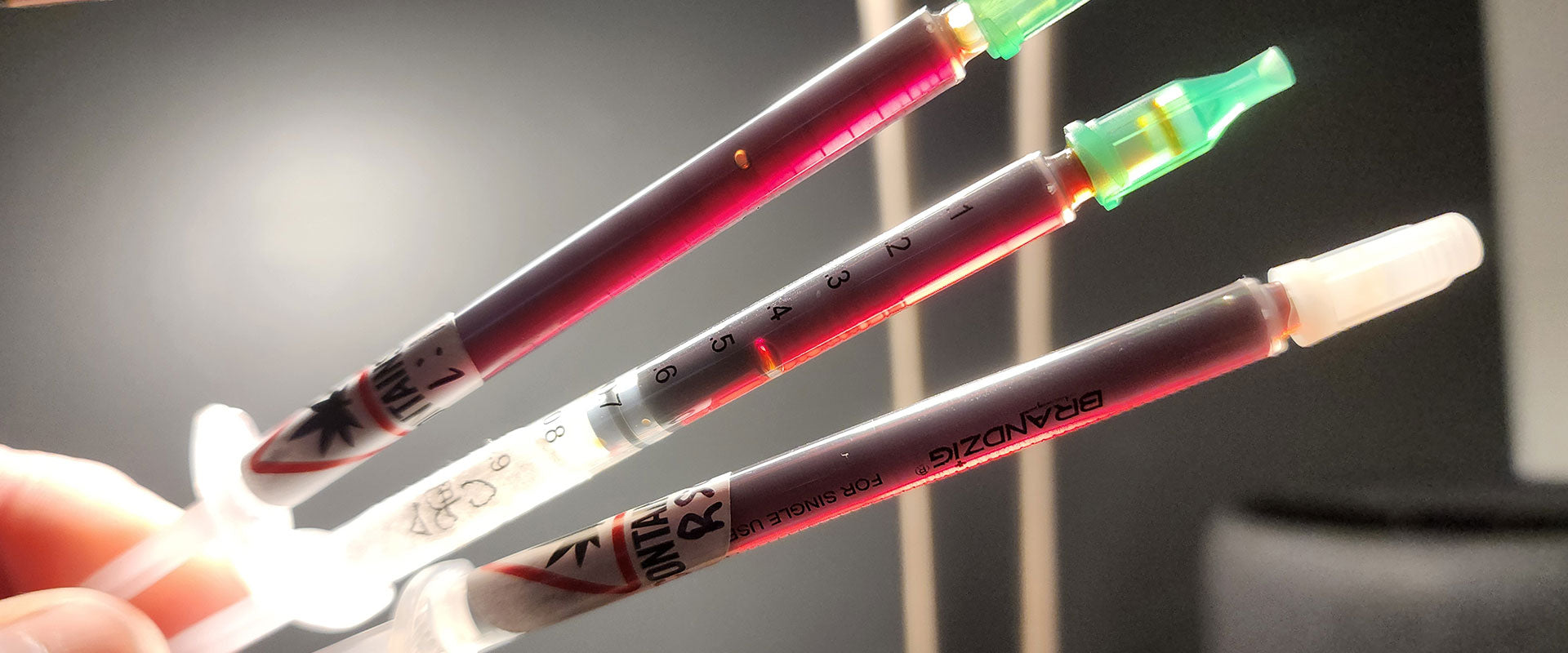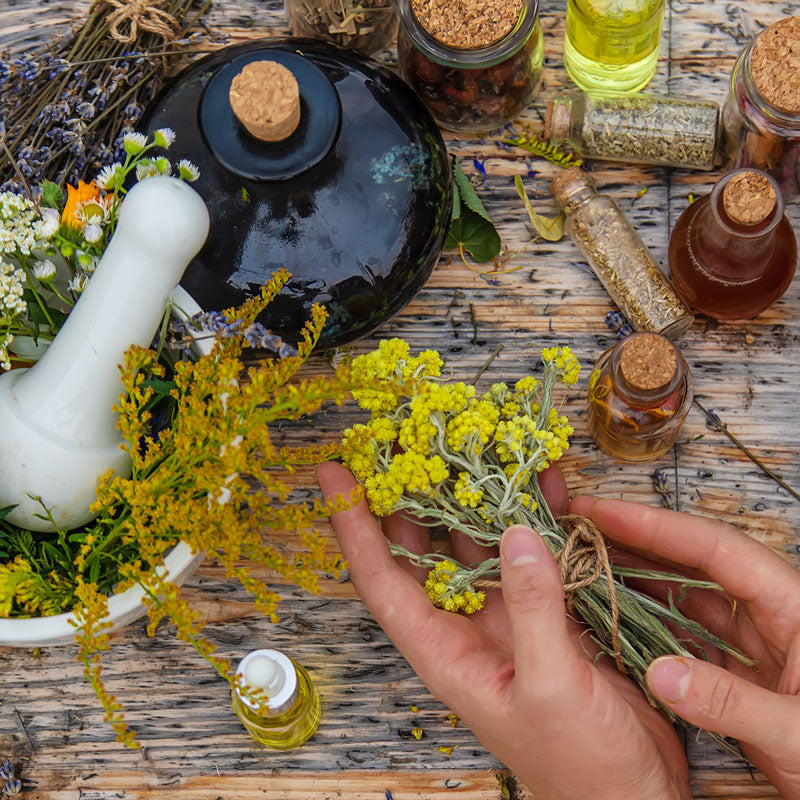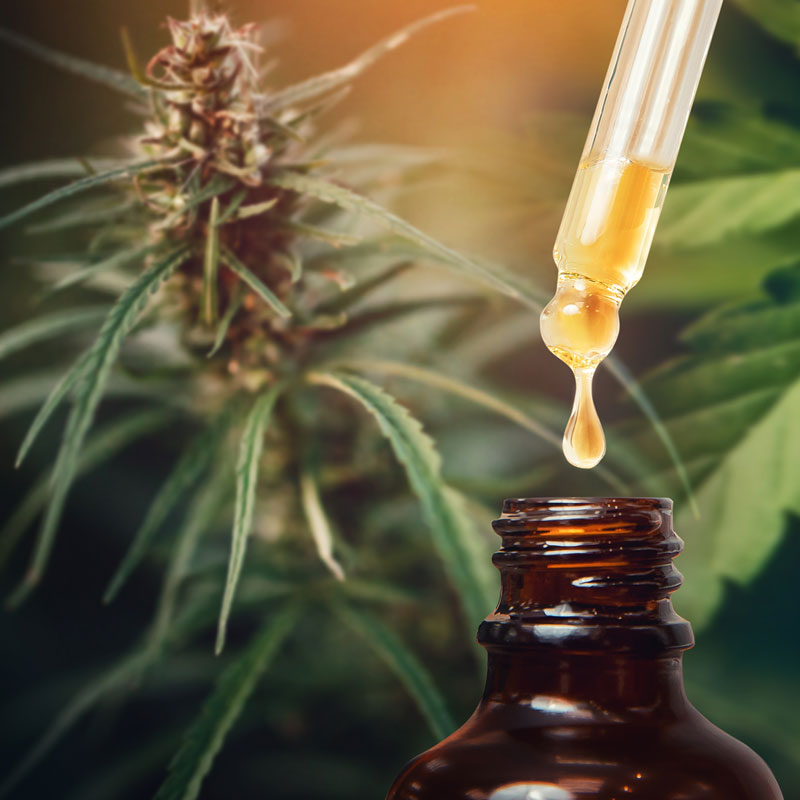How to Make RSO From a 200 Proof Alcohol Tincture
RSO, or "Rick Simpson Oil", is a type of full extract concentrated cannabis oil that has gained attention for its potential therapeutic uses across a broad range of conditions and ailments. Named after Rick Simpson, a Canadian medical marijuana activist, RSO is made through a specific extraction process that results in a thick, potent oil containing a full spectrum of cannabinoids and terpenes found in the cannabis plant. Simpson originally created the oil to treat his own skin cancer and (he) has since advocated its use for a variety of medical conditions.*

What is RSO?
R.S.O. is an acronym for "Rick Simpson Oil", and is used to describe any highly concentrated full extract cannabis oil.
Who was Rick Simpson?
The name fter Rick Simpson, a Canadian who advocated for its use in treating various medical conditions, including cancer.
FECO vs RSO
FECO stands for "Full Extract Cannabis Oil". RSO is a type of FECO with tradition of using non-ethyl alcohol as the solvent. This RSO recipe was developed by Rick Simpson in an era when better alternatives, namely access to food grade ethanol as a solvent did not exist. In 2024, with access to online suppliers of food grade ethanol, RSO recipes should always and only be made with food grade ethyl alcohol (ethanol).
What is in RSO?
RSO typically contains a high concentration (over 60%) of cannabinoids in addition to the naturally occurring hemp waxes, plant oils, and other plant constituents like chlorophyll. The spectrum of cannabinoids in a batch of RSO will be determined by the strain of the cannabis plant used during the tincture-extraction phase. Finished RSO will typically contain a small amount of residual alcohol, usually representing 1% or less of total volume. This residual alcohol is low enough that it cannot be tasted, nor will it affect the RSO if smoked, but remains as a means of keeping the final product in a gooey phase that can be dispensed using a standard oral syringe.
Choosing the Solvent for RSO: Ethanol vs Other Solvents
Not all alcohols are created equal! And not all solvents are food safe like pure ethyl alcohol (ethanol). Even though RSO recipes involve a heat-evaporation stage, a significant amount (up to 5% by weight) of residual solvent will be present unless additional measures are taken to fully purge the concentrate of solvents (what do you think makes RSO runny like honey? its the residual solvents!).
For this reason, the type of alcohol you choose to use is a very important decision, and not a place where trade-offs or good-enough will do.
Do: Use alcohol labeled as "ethyl alcohol", and accompanied by the words "non-denatured" somewhere on the label. Choose your ethanol based on strength, represented as "ABV" or "Proof". Seek out 190 proof or higher for RSO recipes. High-Proof alcohol purchased for beverage purposes at a brick-and-mortar liquor store is considered food safe, and will always be non-denatured.
Never: Use toxic solvents like isopropyl "rubbing alcohol", mineral spirits, denatured alcohol blends, or any hydrocarbon derived solvent like butane, propane, pentane.
Read More: How to Choose the Right Solvent for Making RSO
Recipe: How to Make RSO
- Make a tincture using cannabis of choice and pure food grade ethanol. Tinctures used for RSO are typically long-soak full extractions where the tincture sits for 1 day or more at room temperature to complete the extraction of cannabinoids into the 200 proof alcohol.
- Transfer tincture to an evaporation device, see below description of suggested devices. Always use caution and take necessary preparation methods for risk of fire whenever mixing heat and flammable liquids like 200 proof alcohol. Never make RSO in your kitchen on the stove with a window open for ventilation. Different options and methods for reducing alcohol in your tincture to make concentrated oil are discussed in the next section.
- Reduce alcohol in solution, gradually resulting in a thick concentrated cannabis oil.
- Transfer concentrate into a jar or oral syringe for storage.
- Clean up. Get ready for a sticky, stinky mess on your hands, but rest assured that some extra 200 proof alcohol left over will quickly and easily clean up any tools, pans, pots, utensils or other components that need to be cleaned. Any RSO dissolved back into the alcohol used for cleaning can be retained and reevaporated in a next run.
What Does Finished RSO Look Like?
RSO can be described as a thick, semi-viscous oil with the consistency of petroleum jelly or honey, but intensely black throughout caused by the over-oxidization of chlorophyll present from the full extract soak process. Placed in front of a light, the RSO should have a translucent amber hue.
Does Hemp RSO Look Different from THC RSO?
RSO made from hemp derived CBD (cannabidiol) will look indistinguishable from RSO made using cannabis-derived THC (tetrahydrocannabinol).

Why is RSO always dark black?
The dark black characteristic of RSO can be attributed to the full extract long soak of all the cannabis plant's leaves, buds, stems, and stalk. Chlorophyll is very soluble in 200 proof food grade ethanol and will readily absorb into the tincture solution during extraction, unless extracting in super-cold freezing conditions. During the evaporation phase, chlorophyll will oxidize from lime-green to golden brown. If you look at good quality RSO in front of a light, you will see the dark black oil reveal a light brown-amber hue. RSO should be translucent, should not contain chunks or particles when observed through a backlight. An opaque view when placed in front of a light is indication that there are (plant) particles in there that may affect the taste, potency, and shelf life of the final concentrate.

How is RSO Measured for Use?
Due to its sticky, honey-like consistency, RSO is typically stored in oral (needleless) syringes that allow for precise dosing of the thick-goo while keeping storage and delivery clean and manageable. Since each person's needs and tolerance vary, users often refer to a standard dose of RSO as "the size of a grain of rice" or about a 5mm squirt from the syringe. For comparison, the USB-C charging port on your smartphone is approximately 9mm long, giving an easy visual reference for accurate dosing.
How is RSO used?
RSO is a versatile form of cannabis concentrate that can be applied topically, consumed orally, inhaled as a vapor or as smoke. Most people however choose to consume RSO either orally or topically.
What Does RSO Taste Like?
The taste of RSO is typically bitter upfront, with a strong cannabis aftertaste. While individual batches may vary slightly in flavor, the long soak in 200 proof alcohol, followed by an extended heated evaporation process, usually results in a prominent earthy, cannabis/hemp flavor. The bitterness is primarily due to the chlorophyll extracted during the full-extract process. If made from a single strain, RSO will retain some of the strain's unique characteristics—most notably, differences between sativa and indica varieties. However, because of the high heat used during evaporation, most of the original terpenes, which contribute to the plant’s aroma and flavor, are lost. Despite this, the strain of the original cannabis or hemp will still impart some of its signature qualities to the final product, including its effects.
Does RSO Give You Bad Breath?
Generally speaking, consuming a small amount of RSO orally is not enough to make your breath smell of cannabis to others nearby.
How to Consume RSO Orally
RSO can be consumed directly, by mouth, without any further dilution or ingredients. However, the thick-very sticky consistency, and flavor that can be described as "bitter upfront with a very strong cannabis aftertaste" and it is best to mix RSO with one or more food ingredients to hide the taste and prevent much of the RSO from sticking to the roof of your mouth. Any food item can be used including bread, peanut butter, or left-over meatloaf, literally any food will work however we found that soft-dry foods like bread or thinly-sliced ribeye steak work better than hard-dry foods like crackers and pretzels.
Recipe: RSO Peanut Butter
Ingredients: 1 tsp Peanut Butter, 0.1 ml RSO
Tools: Kitchen scale,
- Scoop 1 tsp of Peanut Butter into a small shallow dish.
- Press the syringe plunger to dispense 1 ml of RSO directly onto the peanut butter.
- Stir well to incorporate the RSO into the peanut butter.
- Eat peanut butter directly or spread on bread with jam. Yum.
Can you bake/cook with RSO?
- Yes! Incorporating RSO into a favorite recipe can be an easy fun way to consume RSO orally.
- Adding even large amounts (2-3 grams) of RSO to a batch of baked goods isn't enough to throw off most recipes and can easily be scaled down or up depending on desired effects and needs.
- To ensure that RSO is fully incorporated into your recipe, pre-dissolve your measured dose into 1 tsp of vegetable oil, olive oil, or MCT oil before adding to your recipe.
- Expect the RSO to lend some flavor to any recipe you add it to.
Recipe: RSO Brownies
Ingredients: Box of favorite brownie mix, 1 gram of RSO
- Follow directions on box to create brownie batter, leave out oil.
- Dispense 1 gram of RSO into vegetable oil. Stir until the RSO is fully dissolved into the vegetable oil. Add oil to the batter, stir well to thoroughly incorporate.
- Bake brownies according to recipe on box.
- Cut into 4 squares wide by 5 squares long for 20 servings, each containing 0.05mg of RSO.
Can I substitute a box of brownie mix for muffins, cupcakes, scones, or other baked goods?
Yes, the 1 gram of RSO will easily incorporate into any baked recipe as described above. Most important step is to measure the amount of RSO going into the batch so that you have an idea on the dose-per-serving.
Can RSO be used Topically?
Yes, Rick Simpson Oil can be applied directly to the skin or on wounds without additional preparation or steps. RSO that is applied topically to the skin does not cause psychotropic effects or impair mental ability as compared to consuming orally or sublingually.
How to Topically Apply RSO to the Skin
Dispense directly onto skin or a bandage. Place bandage over spot with RSO to promote absorption and prevent RSO from spreading. Begin with a small amount, about the size of a grain of rice, and adjust amount accordingly to area of application.
Does RSO have an odor?
RSO will have a distinct odor of "cannabis", though many of the terpenes that give individual strains their unique character are often lost in the heating and evaporating stage due to the terpenes low volatility.
RSO kept in an oral syringe with the cap on does not have a detectable odor and can be stored conveniently without layers and layers of bags that might be required with fresh cannabis flower buds.
When cooking with RSO, the heat of the baking process will create a cannabis odor that will fill your kitchen, so be prepared for that...
When applying topically, by placing a small drop of RSO on a wound and covered with a bandage, no cannabis-odor can or should be detected.
Does RSO Need to be Decarboxylated Further?
No. The cannabinoids contained within the RSO will be decarboxylated as part of the evaporation process which typically involves low heat setting for a long period of time. The heat applied during the extraction to evaporate the alcohol away and concentrate the cannabis oils fully decarboxylates the THC-A molecules into THC molecules which can interact with our endocannabinoid system. For this reason, it is unnecessary to decarboxylate cannabis before making alcohol tincture destined for RSO as the last step.
Disclaimer, no medical claims, or advice.
*CulinarySolvent.com, The Northern Maine Distilling Company, and the author of this article make NO medical claims regarding the potential therapeutic uses of RSO (Rick Simpson Oil), cannabinoids, or any other products mentioned on our website. The content provided is for informational purposes only and is not intended as medical advice, nor does it substitute for professional medical guidance or treatment. Rick Simpson Oil and its uses are described based on publicly available information and should not be construed as endorsed or medically reviewed by CulinarySolvent.com or any third parties. If you find an error or information that could be improved, contact us immediately here.
Check the rules for cannabis concentrates in your locality.
We emphasize that the legality of RSO, cannabis, and cannabis-derived products, including the process of concentrating cannabis flower into concentrated forms including Rick Simpson Oil, varies significantly by jurisdiction. Before considering the use or production of RSO or similar products, we strongly advise our readers to consult and adhere to the rules and regulations of their local area.
We urge all readers to consult with a qualified healthcare professional before considering the use of RSO or any cannabis-derived products for intended medical purposes.









